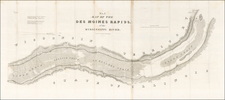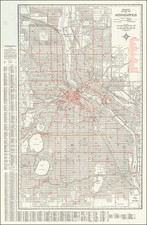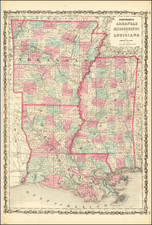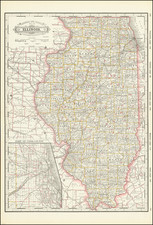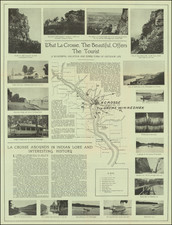Scarce map of the Mississippi River, prepared to illustrated Beltrami's Pilgrimage in Europe and America, leading to the discovery of the sources of the Mississippi and Bloody River . . . , published in London in 1828.
The map provides a fine depicition of the Mississippi River, exhibiting the source of the River at Lake Winnepeg and Leech Lake, with a major tributary (the St. Peters River) starting at Big Stone Lake.
The map shows Beltrami's route through the region. Giacomo Costantino Beltrami (1779 – January 6, 1855), an Italian jurist, author, and explorer, played a significant role in early American exploration, particularly noted for his claim of discovering the Mississippi River's headwaters in 1823. His journey across the United States fostered critical insights into the nascent nation's geography and indigenous cultures.
Born in Bergamo, Lombardy, as one of 17 children, Beltrami's early life was marked by education in literature and law, and military service for the Cisalpine Republic. His involvement with the Napoleonic government and Masonry, followed by scrutiny from the papal authorities, eventually propelled him towards international travels. His connection with the Medici family, through his friendship with Giulia Spada de Medici and marriage into the Bastogi family, illustrates his integration into influential European circles.
Beltrami's North American expedition began in 1823, accompanying notable figures like Stephen H. Long and Lawrence Taliaferro. Diverging from the group at Pembina, he ventured with Ojibwe guides to locate the Mississippi's source. Despite the guides' eventual departure, Beltrami persevered, naming his discovery "Giulia" in honor of Giulia Spada de Medici. His travels extended to New Orleans and Mexico, where his contributions to natural sciences and ethnography were acknowledged by French scientific societies.
Beltrami's legacy is intertwined with the early 19th-century American narrative, reflecting the era's curiosity and ambition. His exploration, writings, and collection of indigenous artifacts offer a window into a pivotal period in American history, marked by expansion, cultural encounters, and scientific inquiry. His journey, albeit controversial in its claims, remains a testament to the era's spirit of exploration and cross-cultural interaction.









